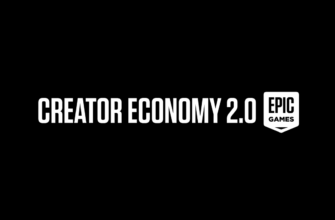We all know the moment: a quick scroll turns into thirty minutes, then an hour, and afterward a vague sense of depletion. That restless, repetitive behavior has prompted an uneasy conversation across homes, schools, and courtrooms about the effect of screens on wellbeing. Mental health, screen time and platform responsibility: how social media is evolving in response to societal concerns is no longer an abstract debate — it’s a policy question, a design challenge, and a daily decision for billions of people.
- The problem in plain terms: why screen time matters beyond minutes
- Teens, identity and the algorithmic echo chamber
- Screen time metrics: why raw numbers mislead
- Platform responsibility: small nudges, big questions
- Examples of product changes
- Table: typical platform measures and what they aim to do
- Regulation, audits and the transparency movement
- Independent research and why it matters
- Civil society, parents and educators: practical roles
- Concrete strategies that work
- Design ethics: putting human needs before engagement metrics
- The tension between attention and revenue
- Practical advice for readers
- Looking ahead: what the next five years might bring
- Opportunities for systemic change
The problem in plain terms: why screen time matters beyond minutes
Counting minutes is a useful start, but it hides important differences. Passive scrolling, doomscrolling, and exposure to curated highlights reels tend to amplify comparison, anxiety, and disrupted sleep, while active, purposeful use can support connection and learning.
Researchers and clinicians emphasize nuance: not all screen time is equal. A video call with a friend late at night affects mood and circadian rhythm differently than a focused podcast or a search for health information, even if the total minutes match.
Teens, identity and the algorithmic echo chamber
Adolescents are often the focus because their brains are developing and social feedback matters more at that age. Algorithms prioritize engagement, which can mean serving content that triggers strong emotional reactions rather than calm, balanced material.
This creates feedback loops: content that spurs outrage or envy gets amplified, which in turn shapes what young people think is normal. Parents and schools feel the pressure, and clinicians report more patients asking about social media’s role in mood, self-esteem, and sleep problems.
Screen time metrics: why raw numbers mislead
Time-on-screen is easy to measure but poor at capturing impact. Sixty minutes of collaborative study or activism feels different than sixty minutes of endless comparison to other people’s highlight reels.
Policy and design conversations are shifting toward qualitative measures: engagement quality, content type, and user’s intent. Tools that simply show “you spent two hours” are helpful, but they don’t tell someone whether that time supported or undermined their goals.
Platform responsibility: small nudges, big questions

Platforms have begun to respond with product features, policy shifts, and public messaging. Some changes are visible and immediate: nudges to take a break, in-app timers, default privacy settings for minors, and experimental reductions of engagement friction.
These moves often feel incremental. The deeper work — reshaping business incentives and transparency around algorithms — is harder and slow to appear in users’ feeds. Still, incremental features can reduce harm for many people when thoughtfully designed and widely adopted.
Examples of product changes
Several large platforms launched well-known features: prompts to take breaks, daily usage dashboards, and optional removal of public like counts. App stores and device makers also added system-wide tools like screen-time dashboards and notification batching.
These features matter because they introduce friction into reflexive behaviors. When a platform interrupts an automated action with a gentle question or a time limit, it creates a moment for choice rather than compulsion.
Table: typical platform measures and what they aim to do
| Feature | Goal | Limitations |
|---|---|---|
| Take-a-break reminders | Interrupt prolonged use | Can be dismissed; depends on user motivation |
| Hidden likes / reduced social metrics | Lower peer-comparison pressure | Doesn’t change algorithmic prioritization |
| Screen time dashboards | Increase awareness of usage | Awareness alone rarely changes habits |
Regulation, audits and the transparency movement
Policy responses are gathering momentum. The European Union’s Digital Services Act has put platform responsibilities into law, and several countries are proposing rules focused on child safety and algorithmic transparency.
Public pressure and journalistic investigations have also pushed companies to release more data and allow independent research. The logic is simple: if platforms shape public life, there should be evidence-based scrutiny of what they amplify.
Independent research and why it matters
External audits and researcher access to platform data help reveal patterns that internal teams might overlook or deprioritize. Independent studies can validate whether a “safety” feature actually reduces harm or simply moves the problem elsewhere.
Transparency also rebuilds trust. When companies publish methods, datasets, or audit results, regulators and the public gain tools to hold them accountable — and to improve design based on real-world outcomes.
Civil society, parents and educators: practical roles
Change is not only top-down. Parents, teachers, and community leaders play a central role in shaping norms around screen use. Digital literacy, guided exploration, and open conversations about emotional responses to content help young people develop healthy habits.
Schools increasingly treat social media use as part of social-emotional learning. Rather than banning devices outright, many educators teach students how to curate feeds, recognize persuasive design, and pause before sharing.
Concrete strategies that work
Practical interventions are often low-tech: scheduled no-phone times at home, device-free bedrooms, and family agreements about use during meals. These steps create predictable boundaries that reduce the need for constant self-control.
For educators, project-based approaches that incorporate media production help students become critical consumers rather than passive recipients. When kids make content, they better understand how platforms reward certain behaviors.
Design ethics: putting human needs before engagement metrics
Product teams are experimenting with value-driven design that prioritizes wellbeing over maximized attention. That can mean lighter touch algorithms, options to prioritize friend content over viral posts, or design cues that encourage reflection.
Design ethics also invites choices about defaults. People rarely adjust settings on their own, so choosing safer defaults for minors, or for all users in certain contexts, can reduce harm at scale without demanding continuous effort from individuals.
The tension between attention and revenue
Business models that rely on high engagement present a fundamental tension. Advertising-driven platforms profit from repeat visits and long sessions, which complicates efforts to make experiences less addictive.
Some companies are exploring alternative models — subscriptions, micropayments, or community-funded networks — that could realign incentives. Those models are still emerging and face challenges in scale and fairness.
Practical advice for readers
Change starts with small experiments. Try one adjustment for two weeks: disable nonessential notifications, move your phone out of reach during work or study, or use an app to limit access to specific apps after a set time.
Set goals for your social media use. Decide whether you’re opening an app for connection, inspiration, learning, or entertainment, and be ready to close it when the original purpose is met. Framing use around goals reduces mindless browsing.
- Turn off push notifications for everything except the most important contacts.
- Use in-app timers and then enforce them with physical barriers, like leaving your phone in another room.
- Curate your feed: unfollow accounts that leave you feeling worse and follow accounts that inform or uplift.
- Establish tech-free windows: mealtimes, the first hour after waking, and the hour before bed.
Looking ahead: what the next five years might bring

The next phase will likely combine stronger regulation, more research access, and product innovations that reduce harm while preserving social utility. Expect richer tools for parents, clearer age verification, and more policy attention on algorithmic influence.
Artificial intelligence will complicate and enable solutions at once: better moderation tools and personalized wellbeing nudges, but also more sophisticated persuasion techniques. Civil society and regulators will need to stay nimble to keep up.
Opportunities for systemic change
Real progress will come from aligning incentives: if platforms can profit from trust and long-term user satisfaction rather than instantaneous clicks, design choices will shift. That requires experimentation, new business models, and public pressure.
Communities and creators can also lead by example: formats that reward quality over virality, subscription journalism, and creator-supported networks offer glimpses of alternative ecosystems where wellbeing is not an afterthought.
I’ve made changes in my own life that illustrate these shifts: replacing morning scrolling with a ten-minute walk and scheduling social media checks into a twice-daily ritual. The result wasn’t perfection, but I slept better and felt less reactive, which made those two deliberate choices worthwhile.
Social media is not going away, nor should it. It evolved because it meets real social and informational needs. The question now is whether that evolution will be guided by short-term engagement alone or by a broader responsibility to mental health and public good.
If you’d like to read more about how platforms are responding and what practical steps you can take, visit https://news-ads.com/ and explore other materials on our site. Your next scroll could be the start of a healthier habit.







